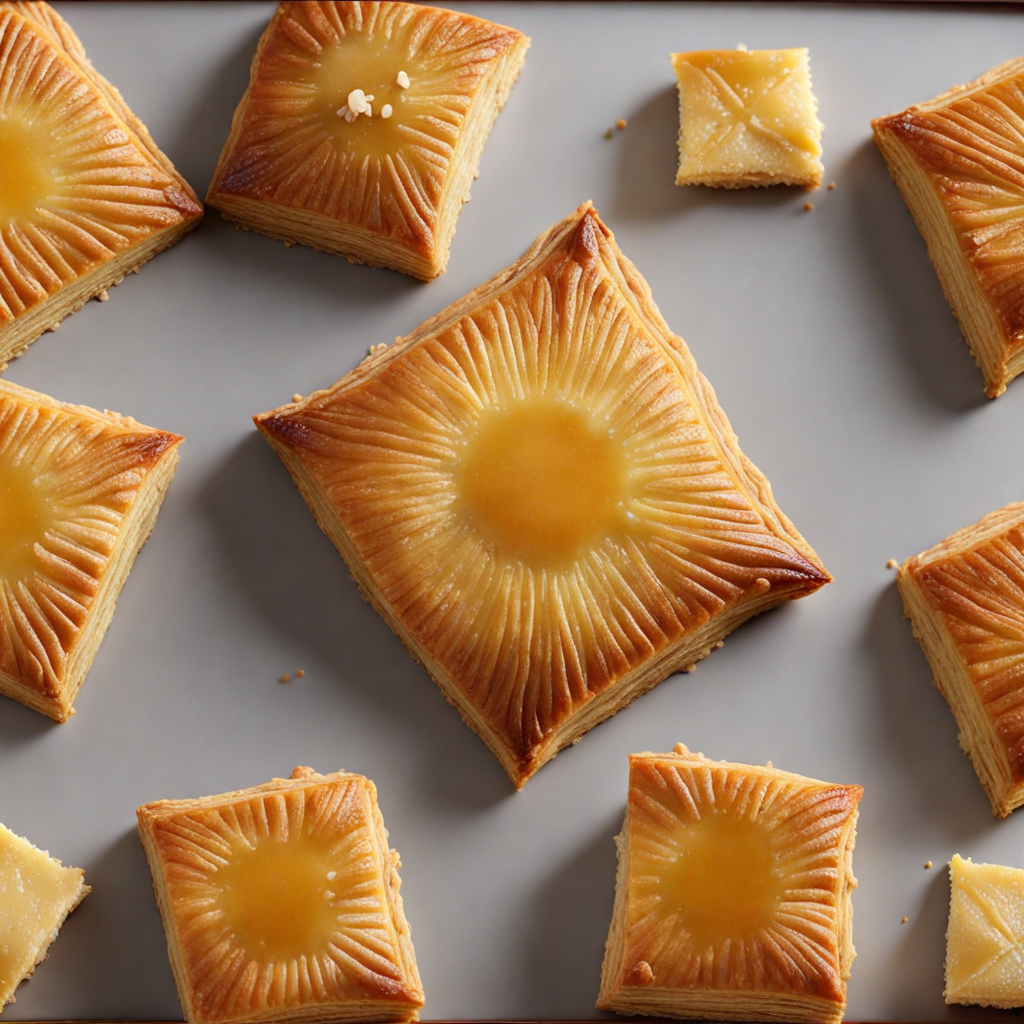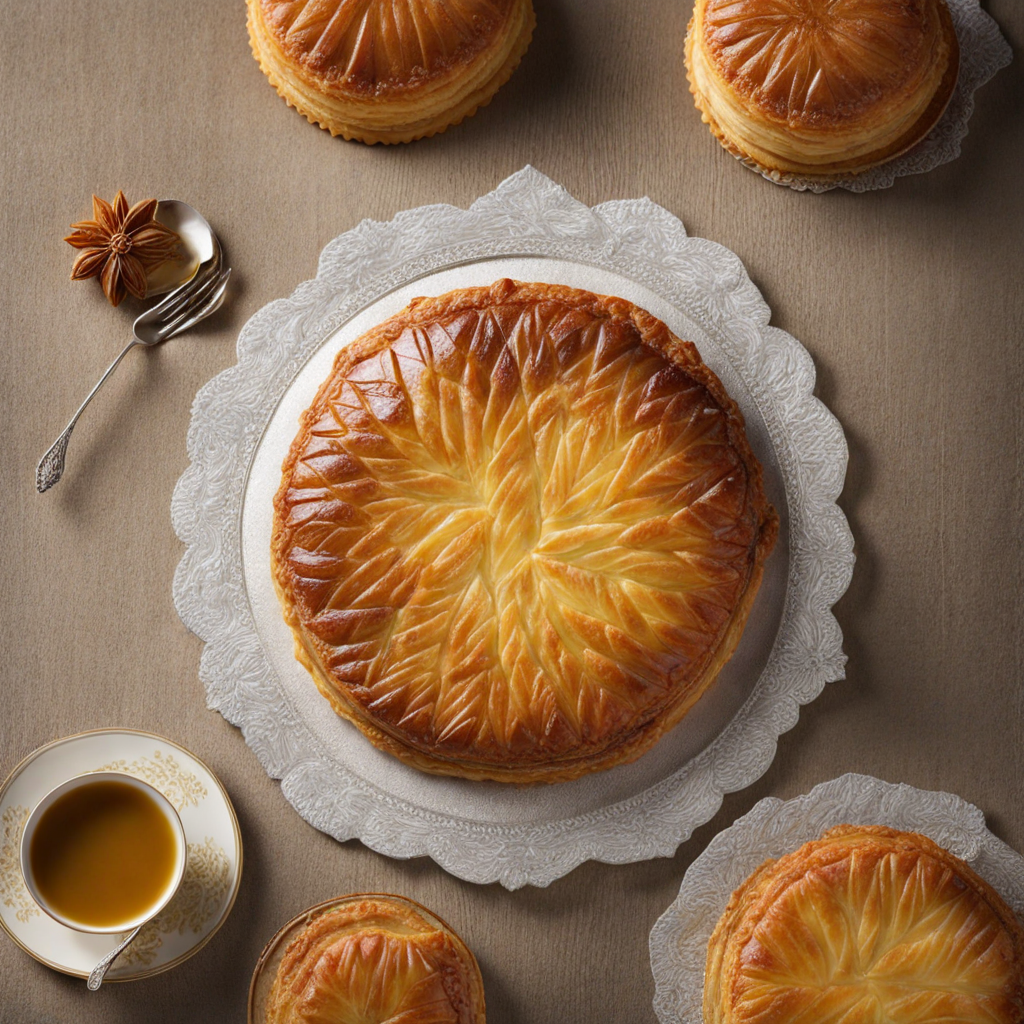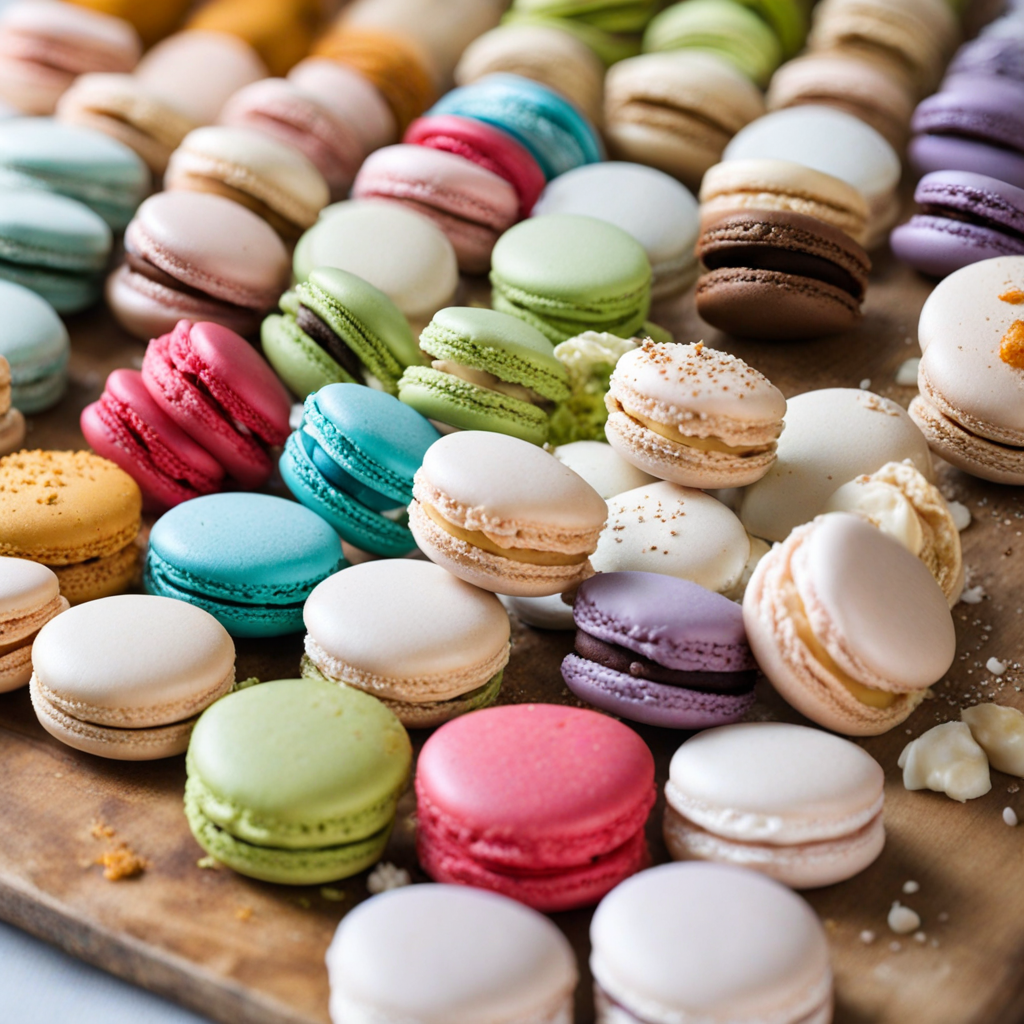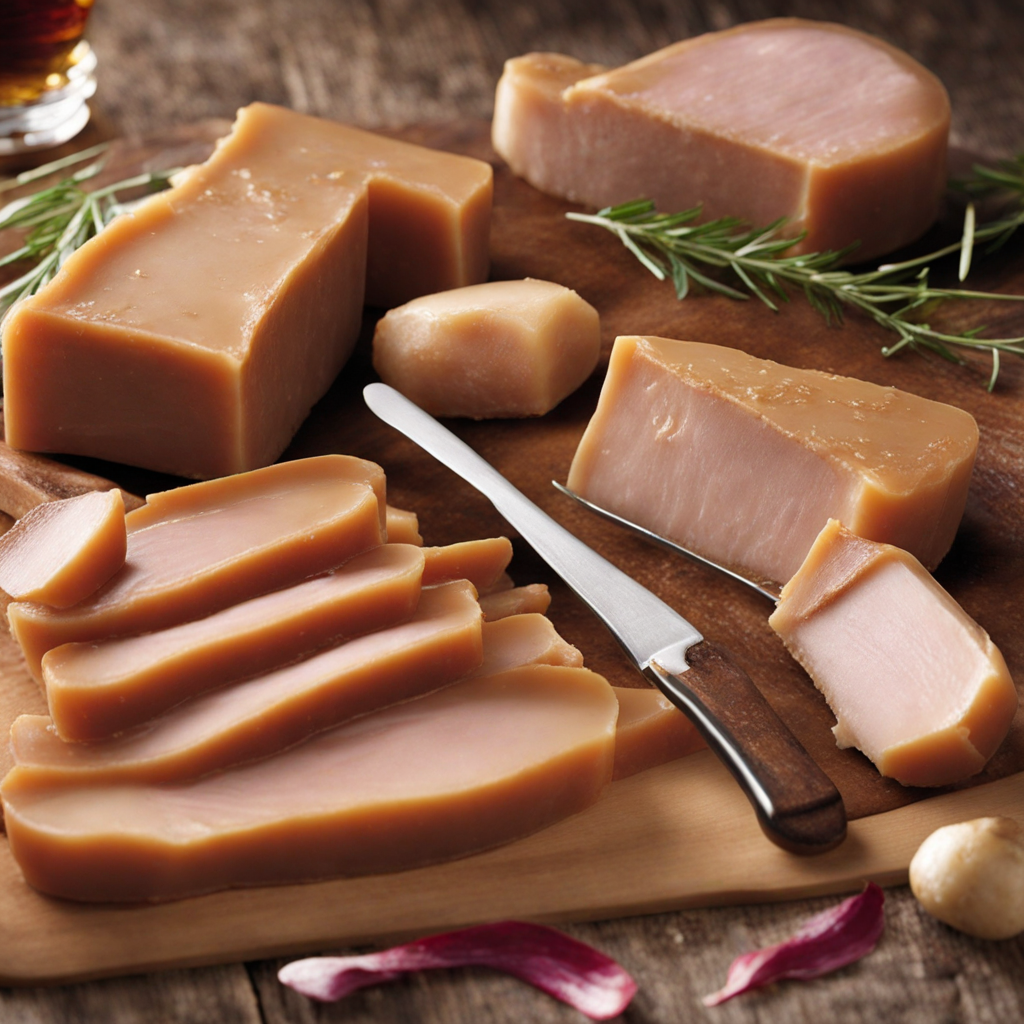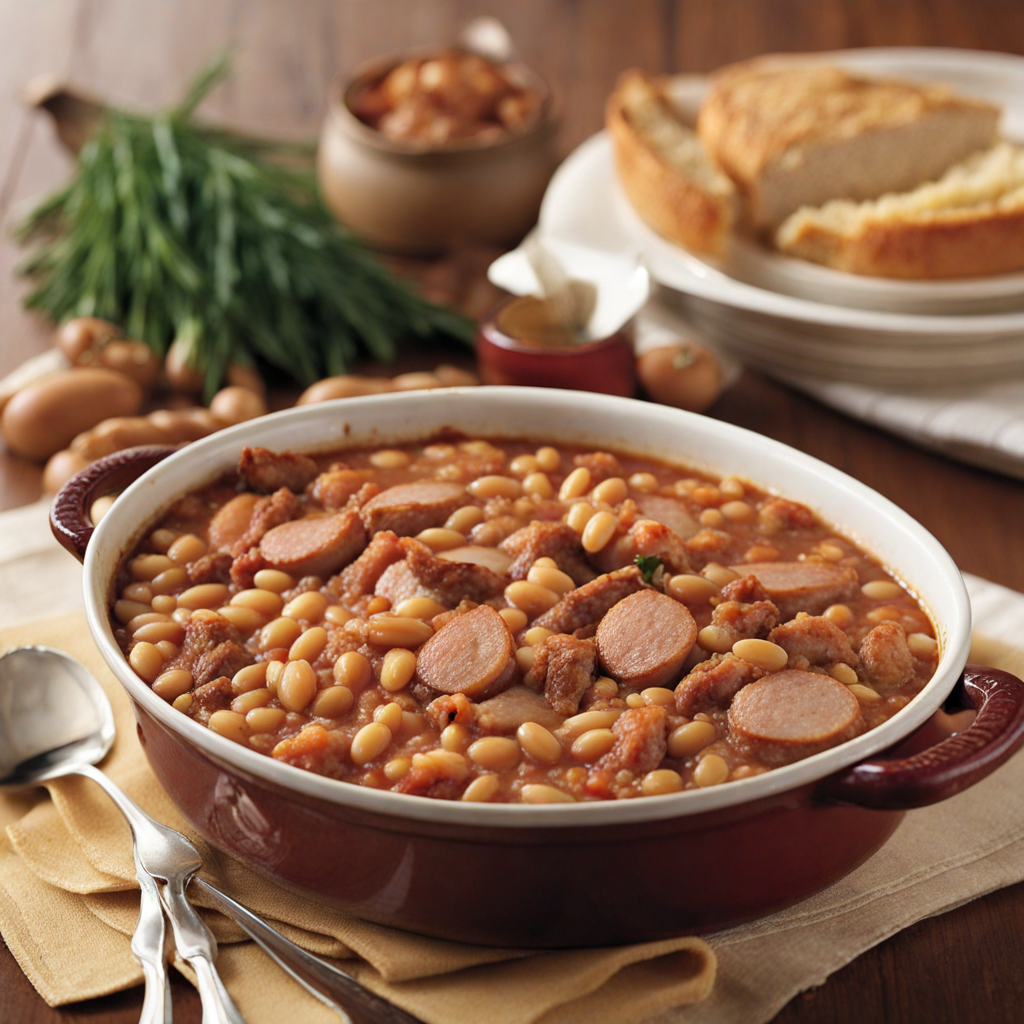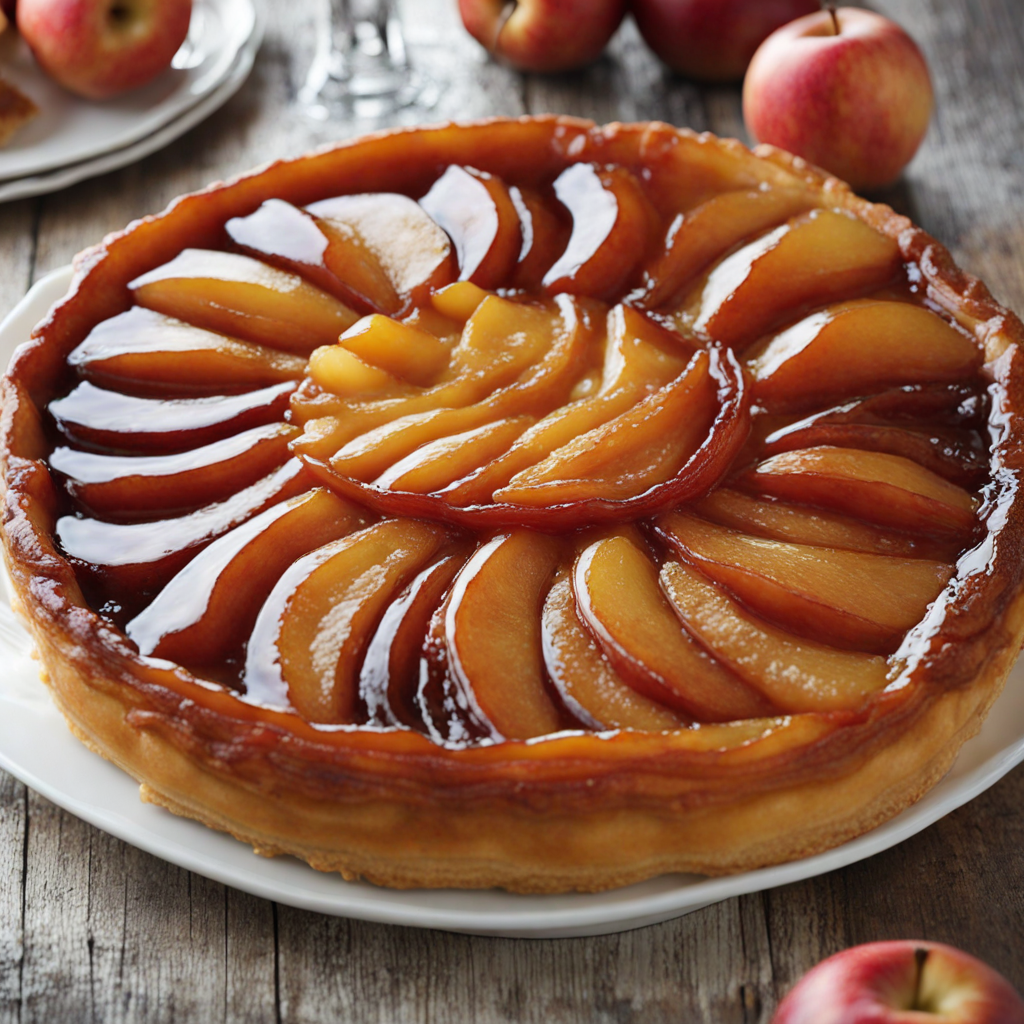Galette des Rois
Galette des Rois is a traditional French pastry that is particularly enjoyed during the Epiphany celebrations in January. This delightful cake typically consists of two layers of flaky puff pastry filled with a rich almond cream known as frangipane. The golden-brown outer crust is perfectly crisp, offering a satisfying crunch that contrasts beautifully with the soft, creamy filling inside. The almond flavor is subtly sweet, providing a warm, nutty richness that is both comforting and indulgent. Each bite invites you to savor the delicate balance of textures and flavors, making it a true culinary delight. The galette is often adorned with a hidden charm or figurine, known as a fève, which adds an element of surprise to the experience. When served, the person who finds the fève in their slice is crowned king or queen for the day, leading to playful festivities and a sense of community among those gathered. This tradition not only enhances the enjoyment of the pastry but also fosters a joyful atmosphere as family and friends come together to celebrate. The galette's round shape symbolizes unity and continuity, making it a meaningful addition to the celebratory table. In addition to the classic almond filling, variations of Galette des Rois can be found throughout France, showcasing regional ingredients and flavors. Some may feature apple, chocolate, or even fruit preserves, catering to diverse palates and preferences. Regardless of the filling, the galette remains a beloved seasonal treat that captures the essence of French pastry-making. For those eager to explore new tastes, indulging in a slice of Galette des Rois is not just about satisfying your sweet tooth; it is an invitation to partake in a cherished cultural tradition steeped in history and joy.
How It Became This Dish
The History of Galette des Rois: A French Tradition #### Origins The Galette des Rois, or "King Cake," is a traditional French pastry enjoyed during the Epiphany, which commemorates the visit of the Magi to the infant Jesus on January 6th. Its origins can be traced back to ancient Roman times during the festival of Saturnalia, a winter solstice celebration that honored Saturn, the god of agriculture. During this festival, a cake was made with a hidden bean, and the person who found it was crowned king for the day. This practice of hiding a token within a cake has endured and evolved through the centuries. As Christianity spread through Europe, the celebration of Epiphany took on new significance. The cake became associated with the biblical story of the Magi, who were considered the first kings to pay homage to Jesus. In France, this tradition solidified into what we now recognize as the Galette des Rois. The first documented use of the term "Galette des Rois" appeared in the 14th century, although the concept likely existed in various forms prior to this. #### Cultural Significance The Galette des Rois is not merely a dessert; it serves as a symbol of unity and celebration within families and communities. Traditionally, a fève (a small figurine, often porcelain) is hidden inside the galette. The person who finds the fève is crowned king or queen for the day, leading to a playful hierarchy and a sense of festivity. This practice fosters a sense of togetherness and joy, making the act of sharing the galette an important social ritual. In French culture, the Galette des Rois transcends mere consumption; it embodies the spirit of conviviality and celebration. The cake is typically shared among family members or friends, often with the eldest person in the group cutting the cake and distributing the slices. As each person receives their piece, the anticipation builds to see who will be crowned king or queen for the day. In regions such as Provence, the Galette des Rois is made in the form of a brioche, often adorned with candied fruits to represent the colors of the Magi. This is known as "Gâteau des Rois," and it differs from the more common puff pastry version found in the north of France. This regional variation highlights the diversity of French culinary traditions and how local customs can shape a single dish into various forms. #### The Evolution of the Galette The Galette des Rois has undergone significant transformations over the centuries. The classic version, which features a flaky puff pastry filled with almond cream (frangipane), emerged in the 19th century and quickly became the standard in many French households. The choice of frangipane as a filling reflects the influence of Italian cuisine on French gastronomy, showcasing the interconnectedness of European culinary traditions. The pastry itself has evolved, with modern interpretations incorporating various flavors and fillings, such as chocolate, fruit, or even savory options. Bakeries across France offer their unique takes on the galette, showcasing creativity while honoring the traditional essence of the dish. This adaptability has helped maintain the galette's popularity, ensuring that it remains a cherished part of French culture. In the 20th century, the practice of sharing the galette became more formalized, with families often gathering specifically for this occasion. The galette has also found its way into popular culture, appearing in literature, films, and even art. Its symbolism of kingship has been embraced by various groups, including schools and community organizations, who use the galette as a means to foster connection and celebration. #### A Global Perspective As French culture spread around the world, so too did the tradition of the Galette des Rois. In former French colonies and regions with significant French influence, the cake has taken on new forms and meanings. For instance, in parts of Louisiana, the King Cake is a staple of Mardi Gras celebrations, reflecting the fusion of French and Creole cultures. This variant is often decorated with vibrant colors representing justice (purple), faith (green), and power (gold), and it typically contains a hidden baby figurine instead of a fève. The globalization of the Galette des Rois has led to an increased appreciation for its rich history and cultural significance. Bakeries around the world have embraced this French tradition, offering their own interpretations while honoring the original spirit of the dish. As a result, the galette has become a symbol of cross-cultural exchange, highlighting the ways in which food can transcend borders and unite people. #### Modern-Day Celebrations Today, the Galette des Rois is celebrated not only in France but across the globe. In France, the festivities begin on January 6th and often continue throughout the month. Bakeries prepare large quantities of galettes, and families eagerly anticipate the occasion to gather, celebrate, and enjoy this time-honored treat. In addition to family gatherings, many communities host public celebrations featuring galette tastings, competitions, and parades. These events reinforce the communal aspect of the cake and serve to educate new generations about its history and significance. Schools often partake in these traditions, teaching children the importance of sharing and the joy of culinary heritage. The Galette des Rois has also found its way into social media, where food enthusiasts share their versions of the pastry, fostering a sense of global community. Home bakers proudly post photos of their creations, showcasing their creativity while paying homage to the traditional recipe. The digital age has allowed the galette to reach new audiences, ensuring its legacy continues to thrive. #### Conclusion The Galette des Rois is a delightful blend of history, culture, and celebration. From its origins in ancient Roman festivities to its modern-day interpretations, the galette has evolved while retaining its core significance as a symbol of unity and joy. As families and communities continue to gather around this beloved pastry, the Galette des Rois remains a testament to the power of food to bring people together, bridging generations and cultures through shared traditions. Whether enjoyed in a cozy home or at a bustling community event, the Galette des Rois is a delicious reminder of the richness of human connection and the enduring legacy of culinary customs.
You may like
Discover local flavors from France


